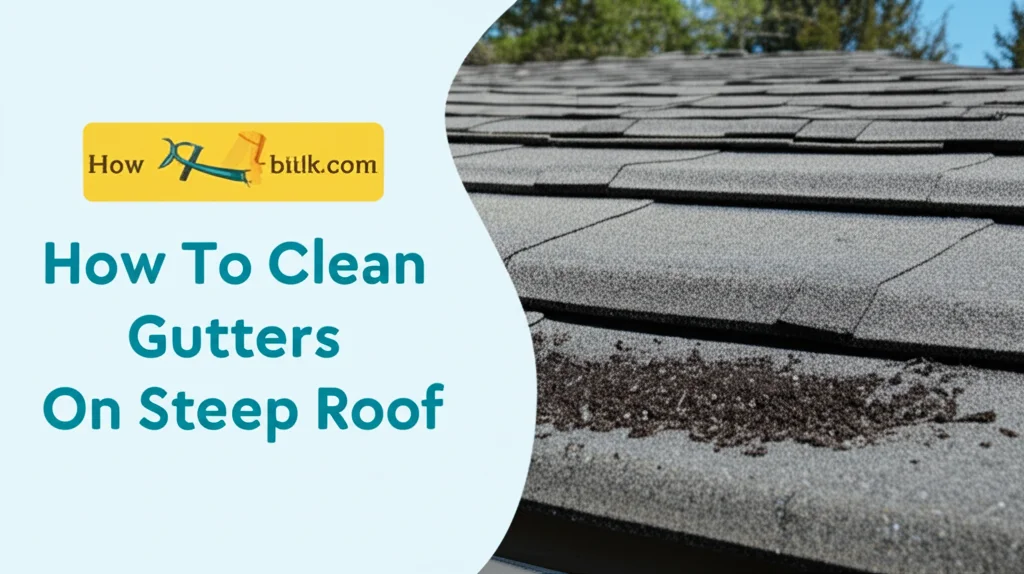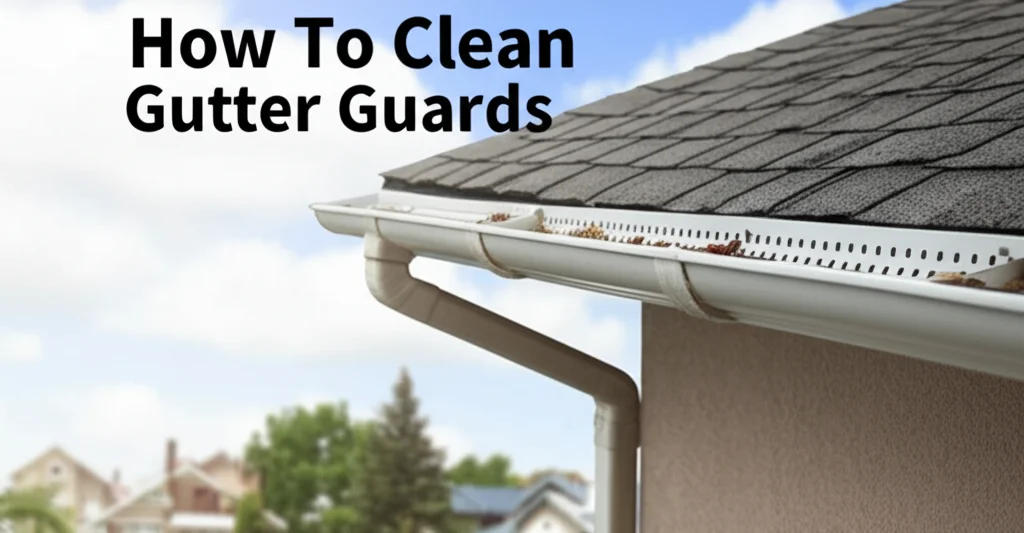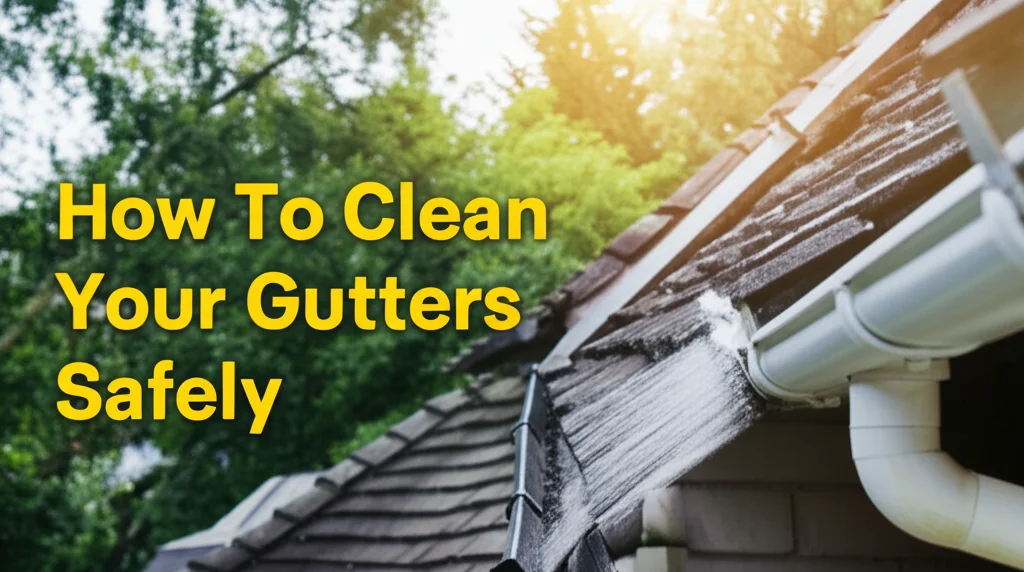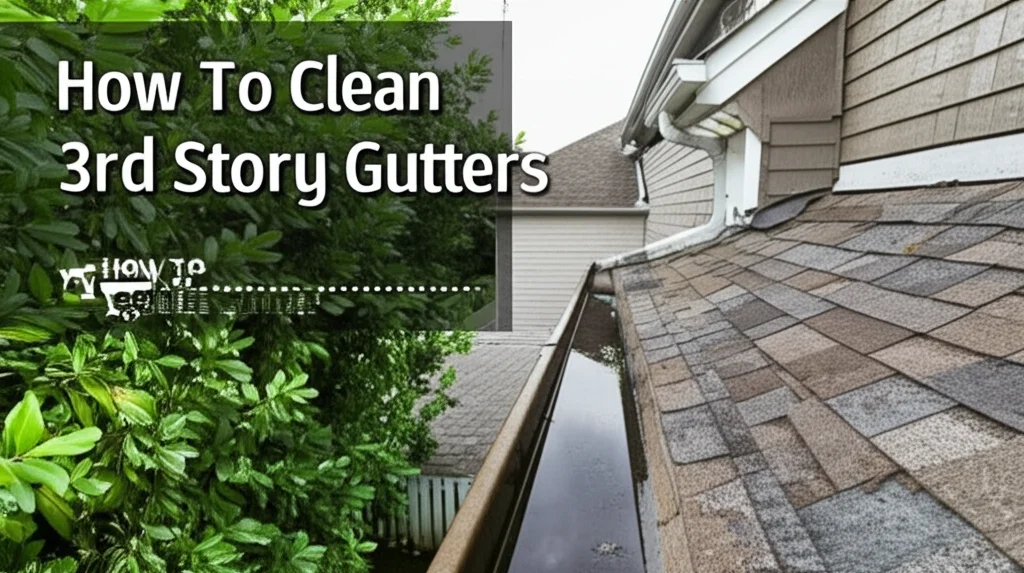· Home Maintenance · 7 min read
How To Clean Gutters On Steep Roof

Cleaning Gutters on a Steep Roof: A Comprehensive Guide
Have you noticed water overflowing during rainstorms? Clogged gutters on a steep roof can lead to serious water damage, but tackling the job yourself can feel daunting. Cleaning gutters on a steep roof presents unique challenges, demanding extra caution and the right approach. This article will walk you through a safe and effective method for cleaning your gutters, protecting your home from costly repairs. We’ll cover everything from safety precautions to the best tools and techniques for the job.
Can you clean gutters yourself on a steep roof? Yes, but it requires careful planning, the right safety equipment, and a methodical approach. Prioritize safety above all else, and consider professional help if you’re uncomfortable with heights or the task seems too risky.
Takeaway:
- Always prioritize safety with proper equipment and a spotter.
- Use a sturdy ladder and gutter cleaning tools designed for reach.
- Work in sections and remove debris thoroughly.
- Regular cleaning prevents costly water damage.
Why Cleaning Steep Roof Gutters is Crucial
Gutters play a vital role in directing water away from your home’s foundation. When gutters are clogged, water can back up and cause damage to your roof, siding, and foundation. A steep roof amplifies this risk because debris tends to accumulate more quickly and the consequences of a fall are more severe. Ignoring gutter maintenance can lead to expensive repairs down the line, so regular cleaning is a smart investment. Think of it as preventative maintenance – a small effort now can save you a lot of money and headaches later.
Safety First: Essential Precautions
Before you even think about grabbing a ladder, safety needs to be your top priority. Working on a steep roof is inherently dangerous, and a fall can result in serious injury. Always wear sturdy, non-slip shoes. Consider wearing a safety harness attached to a secure anchor point on the roof. Have a friend or family member act as a spotter to help stabilize the ladder and provide assistance. Never work alone, and always be aware of your surroundings.
- Wear gloves: Protect your hands from sharp debris and potential contaminants.
- Eye protection: Safety glasses or goggles will shield your eyes from falling debris.
- Long sleeves and pants: Provide additional protection from scratches and irritants.
- Non-slip footwear: Essential for maintaining a secure footing on the ladder.
- Inform someone: Let someone know you’re working on the roof and when you expect to be finished.
Tools You’ll Need for the Job
Having the right tools makes the job much easier and safer. A sturdy ladder is the foundation of your operation. Choose a ladder that extends at least three feet above the roofline for safe access. A gutter scoop is ideal for removing loose debris. A garden hose with a spray nozzle can help flush out remaining particles. Consider a gutter cleaning attachment for your leaf blower to reach difficult areas.
- Ladder: A stable, extendable ladder is essential.
- Gutter scoop: For removing large debris like leaves and twigs.
- Garden hose with spray nozzle: To flush out remaining debris.
- Gutter cleaning attachment for leaf blower: Extends your reach and cleaning power.
- Bucket: To collect the removed debris.
- Work gloves and safety glasses: For personal protection.
Step-by-Step Guide to Cleaning Steep Roof Gutters
Now that you’re prepared, let’s get to the cleaning process. Start by positioning your ladder securely on stable ground. Ensure the ladder is at the correct angle – about 75 degrees. Work in manageable sections, typically 6-8 feet at a time. Use the gutter scoop to remove loose debris, depositing it into your bucket. Once the bulk of the debris is removed, use the garden hose to flush out any remaining particles.
Inspecting Downspouts
After cleaning the gutters, it’s crucial to check the downspouts. A clogged downspout can negate all your hard work. Insert the hose into the downspout and flush it with water. If the water doesn’t flow freely, you may need to use a plumber’s snake or a specialized downspout cleaning tool to dislodge the blockage. Regularly checking and clearing downspouts prevents water buildup and potential damage.
Preventing Future Clogs: Gutter Guards
Once you’ve cleaned your gutters, consider installing gutter guards to minimize future maintenance. Gutter guards prevent leaves and debris from entering the gutters in the first place, reducing the frequency of cleaning. There are various types of gutter guards available, including mesh screens, foam inserts, and brush guards. Choose a system that suits your budget and the type of debris common in your area. Investing in gutter guards can save you time and effort in the long run. You can learn more about protecting your home from water damage by reading about how to remove mold from painted walls.
When to Call a Professional
While many homeowners can safely clean their gutters, there are situations where it’s best to call a professional. If your roof is extremely steep or high, or if you’re uncomfortable with heights, it’s best to leave the job to the experts. Professionals have the experience, equipment, and insurance to handle the task safely and efficiently. They can also identify potential problems with your gutters and roof that you might miss. Don’t hesitate to seek professional help if you’re unsure about any aspect of the process. Maintaining your home’s exterior is important, and sometimes that means knowing when to delegate tasks. You might also find helpful information on maintaining other areas of your home, like how to clean hardwood floors with vinegar.
FAQ About Cleaning Gutters on Steep Roofs
Q: How often should I clean my gutters? A: Ideally, you should clean your gutters at least twice a year – once in the spring and once in the fall. However, if you live in an area with a lot of trees, you may need to clean them more frequently.
Q: Is it safe to use a pressure washer to clean gutters? A: While a pressure washer can be effective, it can also damage your gutters and roof if not used carefully. It’s generally best to avoid using a pressure washer unless you have experience and know how to adjust the pressure settings.
Q: What should I do with the debris I remove from my gutters? A: You can compost leaves and organic debris. Other debris should be disposed of properly in a trash bag.
Q: Can I use a leaf blower to clean my gutters? A: Yes, a leaf blower with a gutter cleaning attachment can be a convenient way to remove loose debris. However, it may not be effective for removing heavier or compacted debris.
Q: What are the signs that my gutters are clogged? A: Signs of clogged gutters include water overflowing during rainstorms, water stains on your siding, and sagging gutters.
Conclusion
Cleaning gutters on a steep roof requires careful planning and execution, but it’s a crucial task for protecting your home. By following the safety precautions and steps outlined in this guide, you can effectively maintain your gutters and prevent costly water damage. Remember to prioritize safety, use the right tools, and consider gutter guards to minimize future maintenance. If you’re ever unsure about any aspect of the process, don’t hesitate to call a professional. Regular gutter cleaning is a small investment that can save you a lot of trouble in the long run. Keeping your gutters clear ensures your home remains protected from the elements, and you can find more helpful home maintenance tips by exploring resources like how to clean outside windows upstairs.




